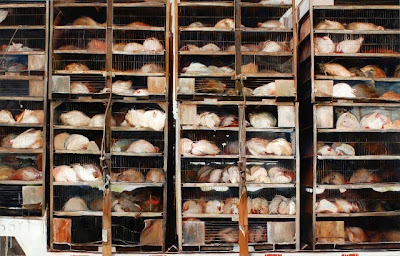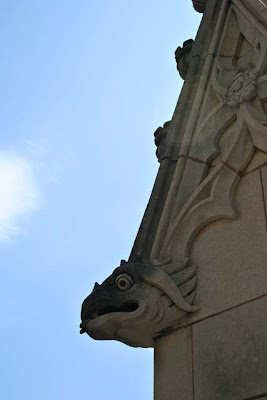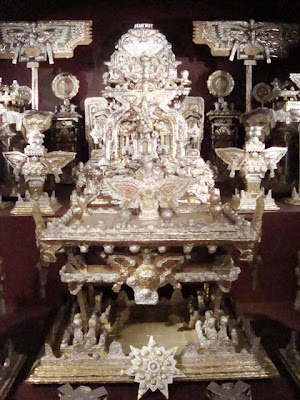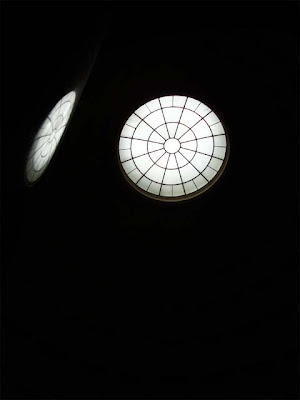


After a three-day marathon I finished reading Ken Follett's 'World Without End'. I was prompted by my visit to the National Cathedral last week to read it; I was hoping for the same kind of detailed insight into medieval architecture as there was in its prequel, 'Pillars of the Earth'. There were some good sections on bridge construction and foundation failure, but overall it wasn't as satisfying as the first book. But it was good enough for 1014 pages to fly by in short order!
I started the afternoon off with a lecture at the Department of the Interior, on the history of homesteading in America. It was a long, hot walk from the nearest subway station, so it was a treat to sit in a cool auditorium for an hour afterward. It was a grand old room, with classic velvet-covered wooden folding seats, like a classic cinema. The lecture was quite good too - the speaker obviously loved the topic, and probably could have talked for twice as long. Part ways through his talk there were two loud noises from outside - just about everyone in the auditorium seemed convinced that there had been an explosion. But it was just thunder - rain was beginning to fall as I exited the building.
Luckily the Art Museum of the Americas was just around the corner. They had an exhibition about the design of the House of the Americas building for the Organization of American States (a Pan-American association) by Paul Philippe Cret, celebrating its 100th anniversary. Not a very big exhibition, but a welcome respite from the rain that started to pour down not long after I arrived.
When it started to let up I headed over to the historic Decatur House, as the rain started to come down harder again. And there I had what might well be a pre-ordained encounter with a book. In undergrad my friend Lisa visited me in Mississauga, and we drove out to the nearby movie Chapters bookstore. While we were there a torrential downpour started, so we were stuck waiting for it to end. I spent the time reading Anna Pavord's book on Tulips, which was gorgeously illustrated and fascinating to read - I purchased it when we left. And today, while waiting out the rain in the Decatur House bookstore, there was a copy of a new book by Anna Pavord, on the history of botanical naming, reduced to a fraction of its original cost. I bought the book, and had a nice conversation with the women at the cash register (who had also read and enjoyed 'Tulips').
I didn't get to see much else of Decatur House, as you have to take a guided tour Friday, Saturday or Sunday, but there was some information about the history of it, particularly as it related to the stories of the slaves who had lived in the home.
On my way back to the bus I ran into a farmer's market. And not just any market - this one had chefs cooking up free samples for us! There were three tents, and everything was delicious: a pork shoulder with pasta dish, a vegetable and meat terrine, and a panna cotta with peach desert and ice peach drink. The best surprises really are the delicious ones.
Photos: Photo across the courtyard from the House of the Americas; close-up of showing the Central American influence on the architectural decoration; model of Philippe Cret's design (isn't there always something wonderful about photographs of miniature models?)
















































